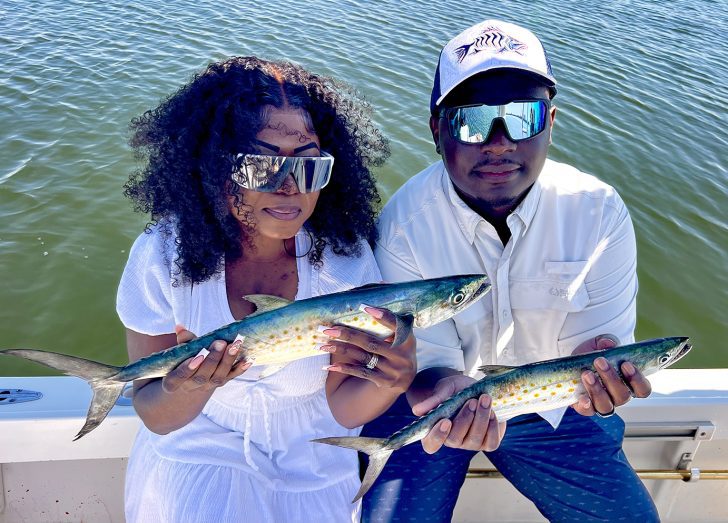Tampa Bay Oyster Beds
First things first, just a friendly reminder: It’s an oyster bed, not an oyster bar! If you want some raw oysters and a cold beer, head down to your local oyster bar. If you want to catch redfish, snook and maybe a monster seatrout, grab a rod and find yourself an oyster bed. Capeesh?
Oyster beds are prevalent throughout Tampa Bay and are one of the most productive natural structures to target redfish and snook. Now that we’re experiencing higher tides, more oyster beds are accessible. Not all oyster beds are the same, however. Some are way up on the grass flats against the mangroves, while others are along the edges of channels or canals.
While fishing along some oyster beds adjacent to a drop off in a channel, four Spanish mackerel were caught by some of my clients on February 28. Those mackerel were the first caught this year, and probably the first ever landed aboard Afishionado during February. A few days earlier, I was fishing in the same spot and caught pompano; so, my first reaction was, they’ve just hooked a pompano. I was pleasantly surprised when it turned out to be a Spanish mackerel.
Not only can you catch Spanish mackerel and pompano adjacent to oyster beds along the edges of deep-water drop offs, sheepshead are known to feed in these areas also. Barnacles cling to oyster beds and everyone knows sheepshead like to feed on barnacles.
The sheepshead spawn runs through the end of April, so they’re fairly easy to catch right now. Shrimp is very effective at catching sheepshead. Sheepshead will eat a whole live shrimp, half of a dead shrimp and frozen shrimp. When targeting sheepshead, I always do a little chumming to attract some fish. I take leftover shrimp from previous charters, freeze them and use pieces of them for chum on my next outing.
Since springtime has kicked in and the negative winter low tides are over, we can now access more grass flats for longer periods of time. Redfish love to hang around oyster beds to feed. On a good incoming tide, I will position my boat within casting distance of an oyster bed and start chumming with live bait. Once I’ve chummed a bit, I’ll place a bait under a bobber and have people cast it out. Usually, it doesn’t take long for the bobber to disappear. Then, it’s just a matter of reeling until the line is tight for a solid hook set.
When I’m approaching an oyster bed on a grass flat, I’m constantly scouring the flat for schools of mullet. Mullet are a dead giveaway for the potential that redfish might be mixed in. Mullet stir up the bottom as they feed on grass and flush out bait fish, shrimp and other small crustaceans. Redfish travel along and scoop up whatever the mullet spook.
Snook have already moved out of the back country, creeks, rivers, residential canals and channels and made their way back onto the grass flats and are feeding in force. Oyster beds adjacent to mangrove points with a deep-water drop off are excellent spots to hook a monster snook. So are oyster beds that line a passageway through a cut.
Occasionally, you’ll catch a nice spotted seatrout around an oyster bed too. For the most part you don’t encounter large schools of seatrout along the beds, but the ones you do catch can be huge. It’s common to land seatrout in the 20-inch plus range that are hanging around the oyster beds.
April marks the end of strong passing cold fronts, so water temperatures are continuing to rise. As I mentioned last month, everything revolves around water temperature, when it comes to fishing. Now that April has rolled around, the inshore fishing is off the charts.
In closing, the next time you’re thinking about heading to an oyster bar, leave your rod and reel behind.
Afishionado, “Adventures in Fishing.”

